Units: the forgotten half of the statistic
February 2021
Units are funny things.
For one, they are all completely arbitrary. Scientific efficiency generally forces us to stick with sensible units like metres, kilograms and seconds. This MKS system has been used by engineers and scientists for more than a century, since the unveiling of the official "Le Grand K" kilogram in 1889.
Yet the world is full of many compelling alternatives, and indeed many units for quantities that the International System of Measurements cannot possible describe.
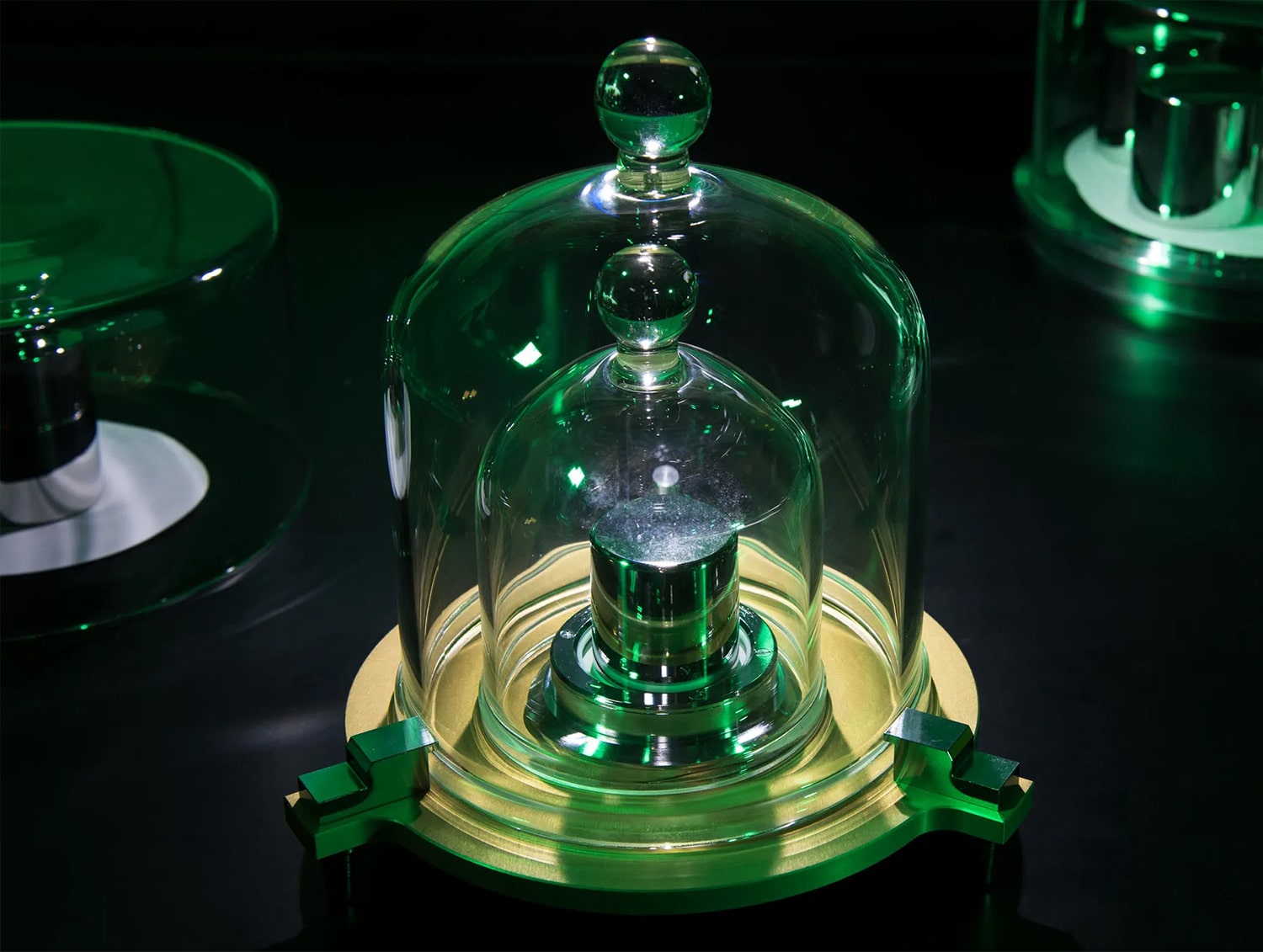
Units are fascinating because they are the forgotten half of the statistic. The devastating blast at Beirut port in August 2020 was reported as being equivalent to 500 tons of TNT. Sounds big, but I've no idea what 1 ton of TNT really looks like. Big objects are compared to double-decker buses, large volumes fill Olympic swimming pools and even larger ones the Grand Canyon.
Measurement by analogy is about convention over precision. The UK often uses Wales as a go-to occasional reference point for area, so much so that an entire conservation charity is named after the concept. But analogous units particularly excel with intangible qualities like radiation.
Exposure to ionising radiation is hard to comprehend. Scientists use the sievert (Sv) as a measure of absorbed dose, but is a typical dental x-ray of 5-7μSv microsievert a lot? Enter the BED: Banana Equivalent Dose. Bananas contain naturally occurring, radioactive potassium-40 equal to ~0.1μSv. Since most people receive around 100 BED each day just from background radiation, your dental x-ray of 50 bananas of radiation doesn't seem so bad after all.
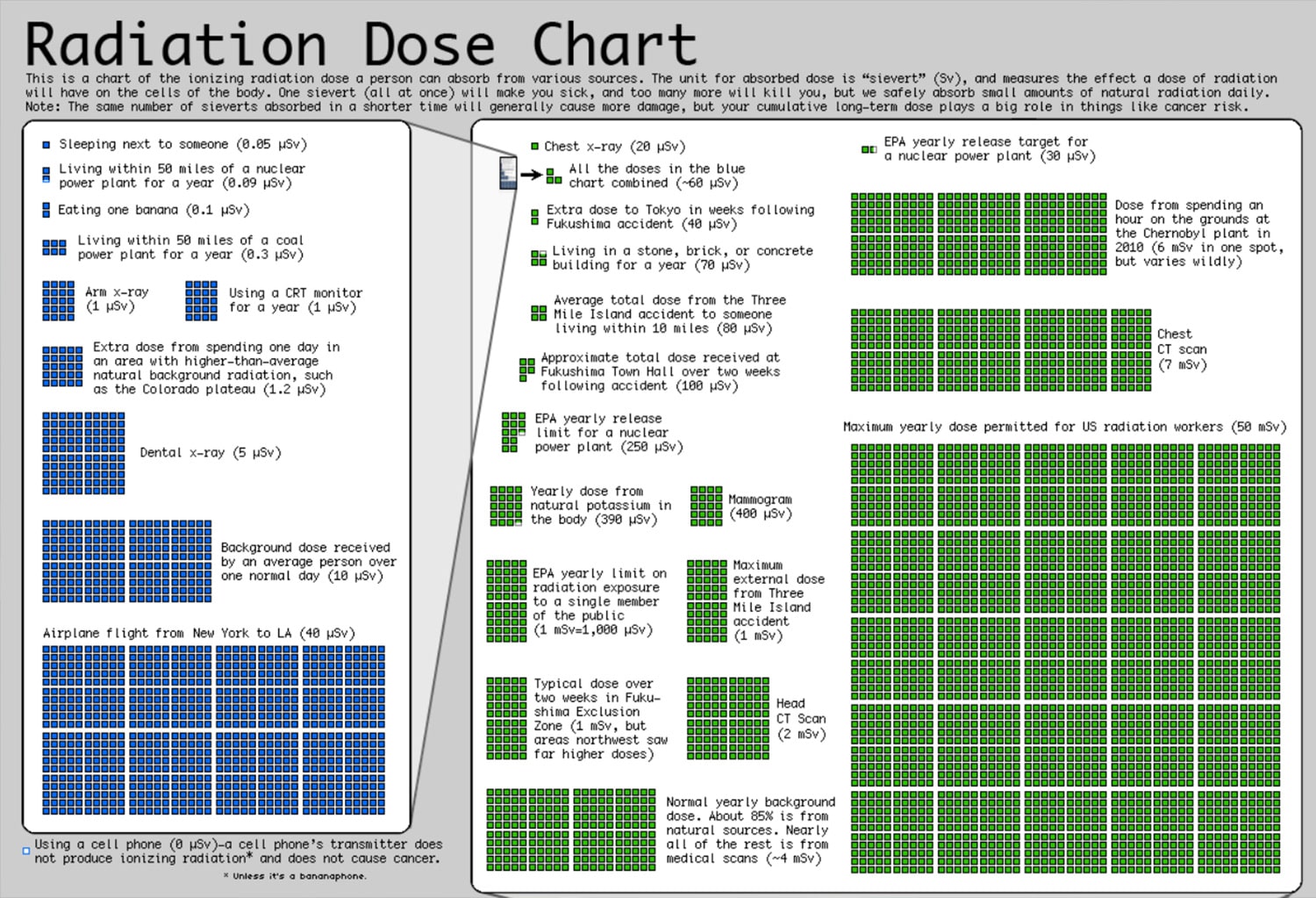
Risk
Radiation can kill you, but how can you measure how lethal something is?
One micromort is a one-in-a-million chance of death. Introduced by Ronald Howard in 1980, it provides an easy comparison for small, risky activities. Going skydiving? That's 8 micromorts of risk per jump. Climbing Everest? More like 29,597 micromorts per ascent.
Just living for a day in the UK, you're exposed to an average of 24 micromorts of risk every day. If COVID had a 1% fatality risk, then having COVID would be 10,000 micromorts. But what about catching it in the first place? One microcovid is a one-in-a-million chance of getting COVID and the microcovid website comes with a handy calculator that weighs up location, prevalence and activity type. That one night stand with a random person? 6000 microcovids.
How much would you pay to remove one micromort of risk? £5? £100? TFL (Transport for London) would pay £3.23, which is calculated based on their value of statistical life figure of £3,229,114 used when evaluating the health benefits of transport schemes. Gruesome, but essential when performing cost-benefit analysis on government policies designed to reduce risk.
As for the skydiving, this 1999 study showed how the injury rate is so high that each pound raised in charity parachuting actually costs the NHS £13.75 in return.
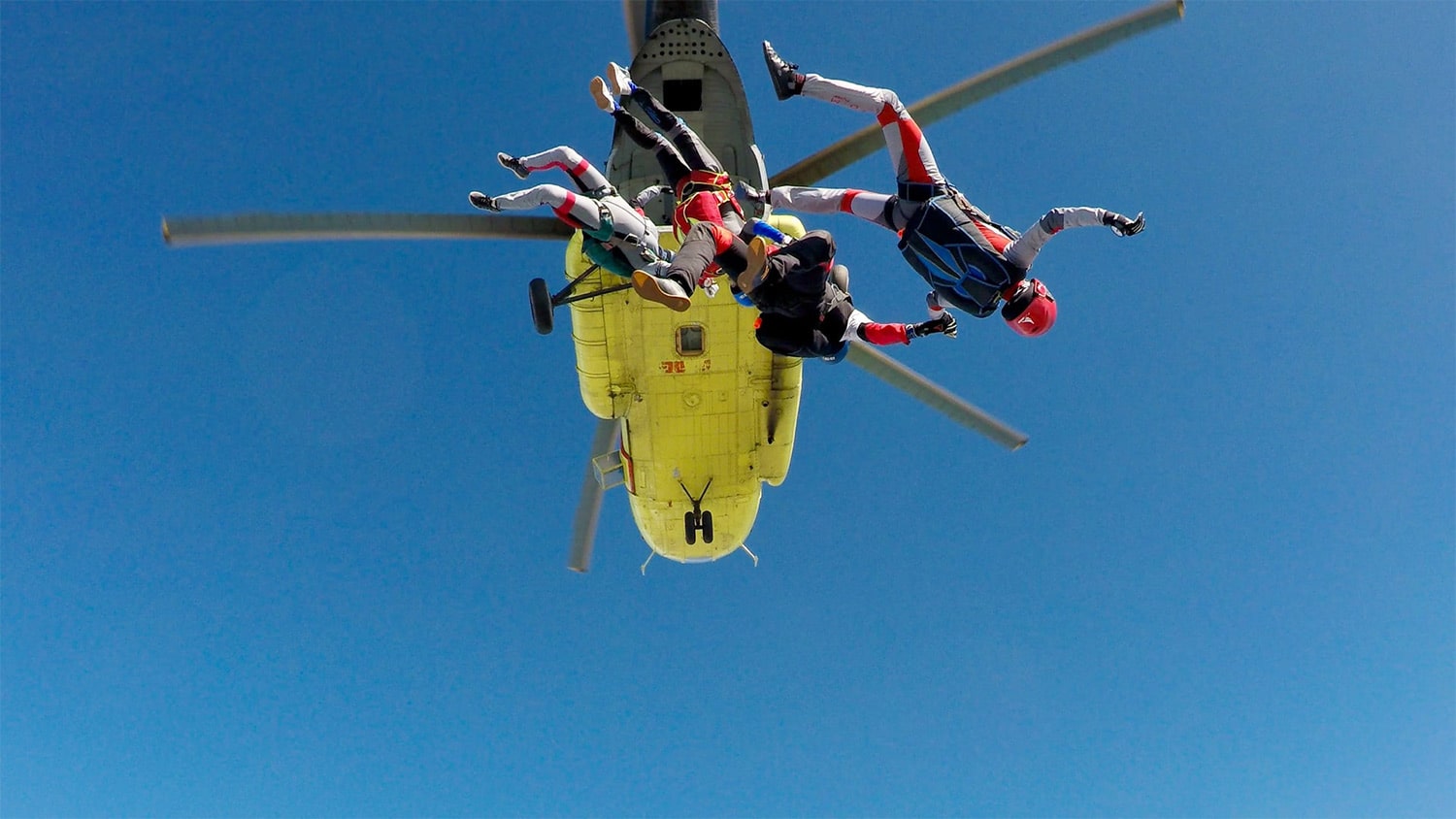
The microcentury
One mort is a 100% risk of death. Measuring risk in micromorts helps us scale down this unhelpfully large quantity into something more manageable.
Using prefixes like micro- to scale units is a familiar concept thanks to everyday words like the millimetre (milli = one thousandth) or kilometre (kilo = one thousand). Micro just means one-millionth-of, as in the microcentury which the physicist John von Neumann is reputed to have said no lecture should be longer than (one millionth of a century is about 52 minutes).
Scaling units down to workable sizes can be applied everywhere. Helen of Troy (of Iliad fame) was described by Christopher Marlowe as having "the face that launched a thousand ships". So if you want to launch just one ship, you will need only a millihelen of beauty.
Snap, crackle and pop
So far we've only considered a single unit at a time, but most of physics and engineering concerns quantities combined of multiple units.
Your position, or displacement, refers to your location at a given time. The rate at which your position is changing is called your speed, for which we combine the units of metres and seconds into metres per second (m/s). And the rate at which your speed is changing is called your acceleration (metres per second per second, or m/s²).
This we all know, but what comes next?
The rate your acceleration is changing is called your jerk. Imagine a car which is accelerating and then slams on the brakes. The changing force you experience is thanks to jerk, not acceleration.
And it keeps going. The rate at which your jerk is changing is your snap. The rate at which your snap changes is your crackle. And then your pop. You may also encounter these terms as the equally amusing jounce, flounce and pounce. A roller coaster without jerk or snap won't even start. A roller coaster with too much jerk or snap can kill you.
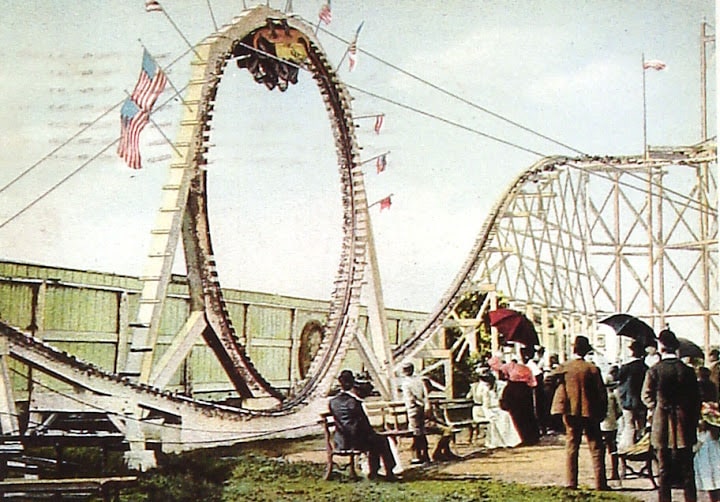
Early roller coaster designers had little understanding of these concepts. One of the first loop-the-loops built was Flip-Flap on Coney Island in 1898. The fast transition from a straight line into the curve of the loop would induce up to 12g of force, leading to all manner of neck injuries. Improvements such as Edwin Prescott's Loop the Loop were little better, but modern roller coasters use a clothoid or cornu spiral to smooth out the transition.

Canary traps and Mongolian Vowel Separators
Units of speed and distance don't change: one metre is always one metre. But there are many units which are defined only in a relative sense.
Take the spaces between these words. Spaces are not a fixed number of millimetres or pixels, but vary relative to the size of the font. The standard unit here is the em, originally defined as the height of a capital letter M (which is typically also the point size of the font, e.g. 12pt). It's also a great word to use in Scrabble, alongside its cousin the en (= half an em).
The Unicode Standard defines every possible character for the whole world: numbers, symbols, accents, emoji and more. In the 140,000+ characters, there are at least 13 different definitions for a space character. A "normal" space between words would be 1/4em, but you could always go for a thick space (= 1/3em), thin space (= 1/5em) or even the medium mathematical space (= 4/18em), specified such because "in mathematical typography, the widths of spaces are usually given in integral multiples of an eighteenth of an em" 🤯.
My favourite name for a space character is the Mongolian Vowel Separator. It's exactly 0ems wide, and there twenty of them between the quote marks here: "". Unicode specifies a number of zero-width spaces like this, mostly designed as reference characters to join or split words in text.

They also have another utility in canary traps. Canary traps are a classic trick for identifying who is leaking sensitive documents by giving each person a subtly different version of the information. Elon Musk tried it in 2009 by switching words like "I'm / I am", but was accidentally outwitted by his own legal counsel. Coleen Rooney used a canary trap to discover that Rebekka Vardy's instagram account was leaking stories about her to the press. Most colour laser printers secretly add tiny identifying dots to the documents you print.
Zero width characters give us another way. They have no impact on how the document is displayed on screen, but they can easily be recovered and checked if the text is copied and pasted to another place. If you're nervous, a tool like SafeText can help you leak your secrets safely.
Pirate-ninjas
In Andy Weir's book The Martian, the protagonist Mark Watney invents his own unit of power consumption. Watney uses pirate-ninjas as a shorthand for kilowatt hours per sol. One sol is the length of the Martian day, awkwardly just 39 minutes longer than a day on Earth. This has led NASA and science-fiction authors to develop interesting approaches like custom watches to solve the misalignment.
Much like Mark Watney, nothing is stopping us inventing our own units. The English language offers up many anatomical phrases for narrow distances ("a whisker", "a hair's breadth", "the skin of your teeth") but electronics engineers might prefer to measure lengths by the distance a beard grows in one second. One beard-second is about 5 nanometres. Particle physicists prefer the use of the barn as a unit of area. One barn is tiny, roughly equivalent to the cross-sectional area of a uranium nucleus, for which we have those working on the Manhatten Project to thank.
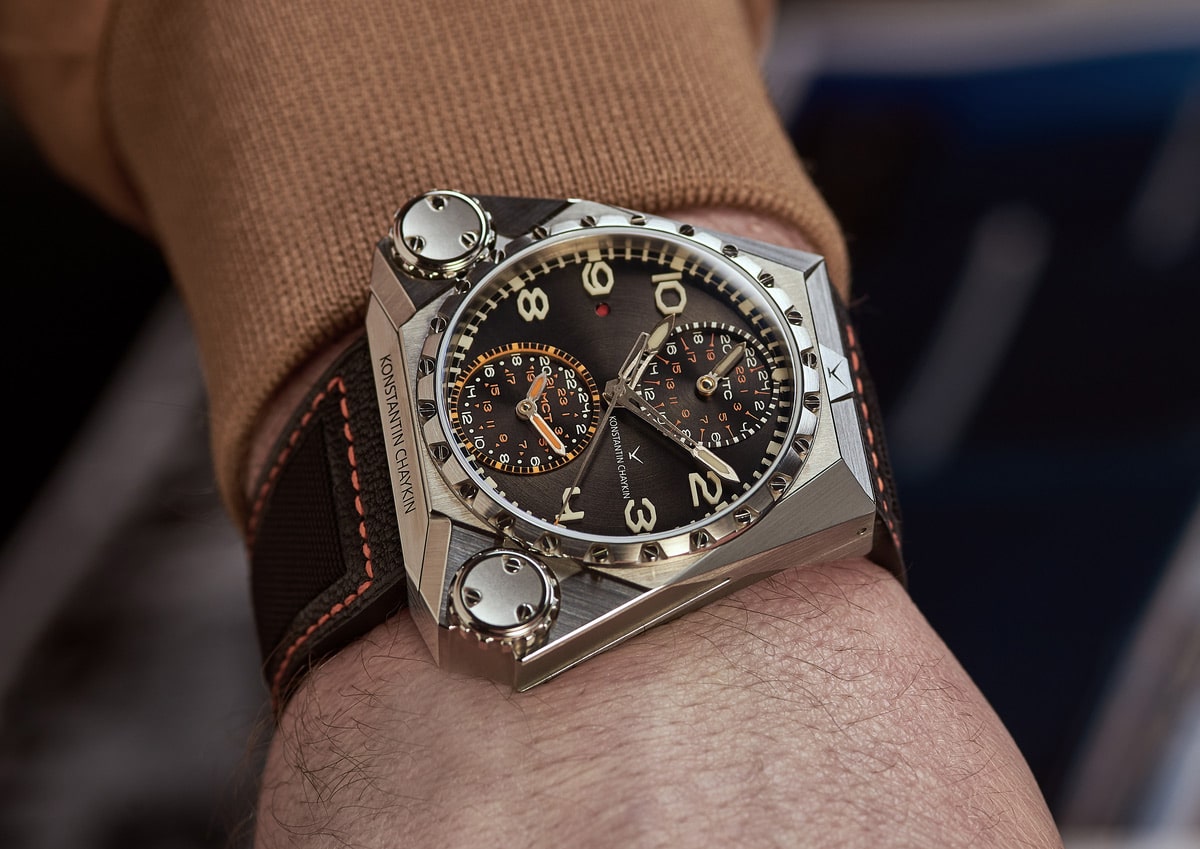
At the opposite end of the scale, a parsec is a huge astronomical unit of distance: 3.26 light-years or 31 trillion kilometres in length. A megaparsec is one million times longer, so a gazillion miles or so.
Combining very big and very small units can lead to unusual results. A nanosecond is very short, one billionth of a second to be precise. Light travels very fast: almost 300,000 km/s. But put them together and light travels at around one foot per nanosecond as the computer scientist Grace Hooper used to say.
So what about megaparsecs, or indeed the unit we get by combining it with a barn: the barn-megaparsec? It turns out its about 2/3rd of a teaspoon.
Something to think about next time you're baking your lockdown loaf.
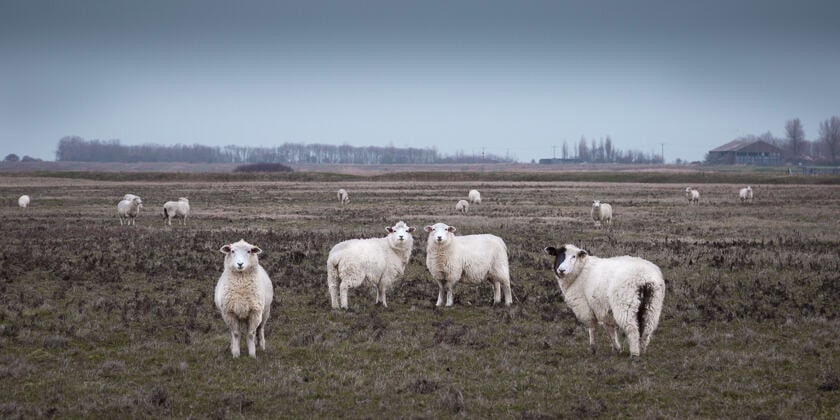
Credit to Charles Deluvio for the header image, from the brilliant Unporn collection on Unsplash.

